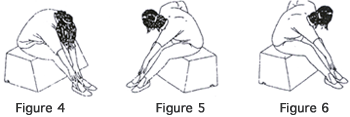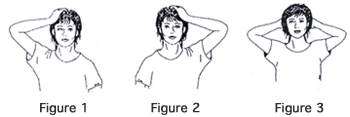Educational Handout
Educational Handout for Neck and Upper Back Pain
There are many causes to the neck and upper back pain. Frequent causes include poor body posture, osteoarthritis, herniated intervertebral disc, trauma, muscle strain or ligamental sprain etc. After thorough examination by your doctor, proper treatments such as medications and physical modalities can be applied. Typical modality treatments include hot pack, shortwave diathermy, interferential wave, ultrasound diathermy, and cervical traction. However, poor body posture must be properly corrected, otherwise neck and upper back pain may soon recur again. As a result, it is crucial that patients need to perform rehabilitation exercises as well. These exercises include:
- Range of motion exercises for the joints:
These include flexion, extension, tilting sideways, clockwise and counterclockwise rotations for the neck. These exercise must be done very slowly and meticulously to avoid causing neck pain. - Muscle strength training:
Isometric muscle strengthening exercises in different directions.
Figure 1: Place your right hand on your right temporal area. Tilt your head hardly towards the direction of your right hand. Your right hand also applies a strong force to prevent your head from tilting. The goal is to maintain your head in a straight and neutral position.
Figure 2: Place your left hand on your left temporal area. Tilt your head hardly towards the direction of your left hand. Your left hand also applies a strong force to prevent your head from tilting. The goal is to maintain your head in a straight and neutral position.
Figure 3: Place both hands behind the head. Tilt your head posteriorly and hardly towards the direction of your both hands. Both of your hands also apply a strong force to prevent your head from tilting backwards. The goal is to maintain your head in a straight and neutral position. - Stretching exercises for the upper back and neck:
Figure 4: Bend your head and body forward and with both arms extended. Try to touch the ankles with your hands. Maintain this position for about 5 to 10 seconds, and then return to the sitting position.
Figure 5: In a sitting position, turn your body sideways to the right. With the left arm extended, try to touch the right ankle with your left hand. Maintain this position for about 5 to 10 seconds, and then return to the sitting position.
Figure 6: In a sitting position, turn your body sideways to the left. With the right arm extended, try to touch the left ankle with your right hand. Maintain this position for about 5 to 10 seconds, and then return to the sitting position.
Repeat these exercises for at least 10 times.


Review Date: May 26, 2013
Reviewed by: Dr. Chen, Carl P.C., Medical Director, Department of Physical Medicine and Rehabilitation, C.G.M.H. Taipei.